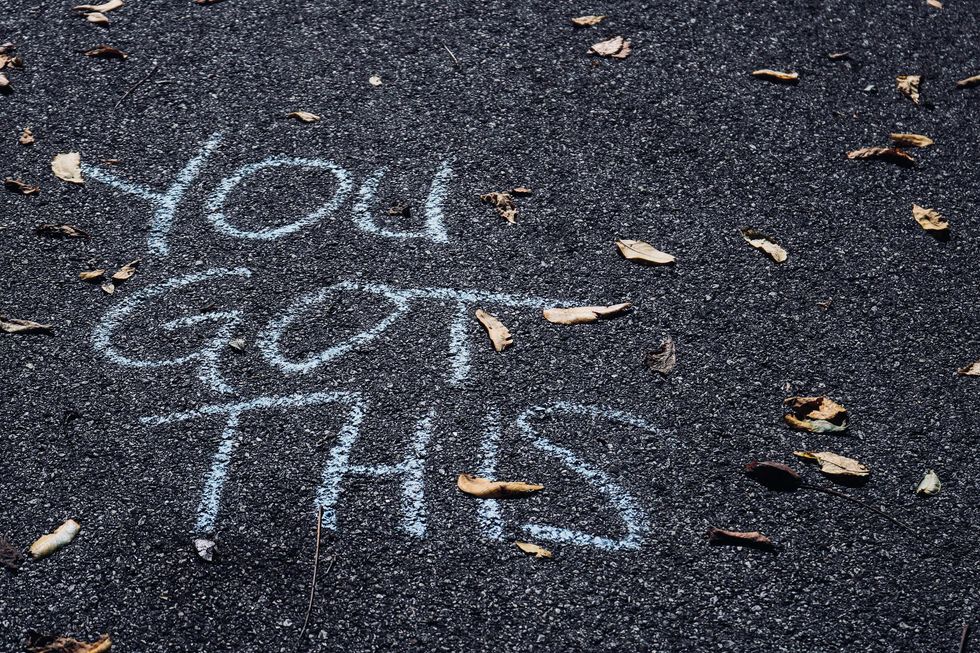
Now more than ever, we must foster environments where we can teach, learn, and build resilience. Business changes at the speed of light. Overnight, industries had to adapt to online or virtual meetings. Building a strong pipeline and sales funnel is much more challenging as we have moved away from in-person meetings and trade shows.
Building resilience exercises into your sales process will help teams learn how to adapt faster, pivot, and learn how to cope with new challenges and difficulties in getting to "yes."
How Do You Define Resilience?

Resilience, according to Merriam Webster, is "the capacity to recover quickly from difficulties; and to develop a toughness. It is also "the ability of a substance or object to spring back into shape; elasticity."
This year I realized that resilience is not just our ability but our capacity to recover, learn, and change from devastating events or even others' debilitating actions.
2020 was a year unlike any for most people on the planet. We were suddenly faced with absorbing, responding, and learning how to live and cope in a pandemic. Our lives were turned completely upside down, and I think for many of us, we are still off-kilter. We have all been forced to be resilient to move through this crisis. We witnessed incredible feats of strength, resiliency, and dedication to pursue a greater good for society in the heroic efforts of front-line responders and healthcare workers, and in communities coming together to support the BLM movement.
Resilience is your ability and capacity to recover and often cope with untenable situations.
Do You Know Resilience When You See It?
 brown wooden blocks on white surfacePhoto by Brett Jordan on Unsplash
brown wooden blocks on white surfacePhoto by Brett Jordan on UnsplashMany of us recreated our home offices this year. I started purging file cabinets (yes, some of us still have those). I found customers and teammates handwritten notes describing how it was to work with me. It felt great to hear "tenacious," "goal-oriented," "able to get a large group to cooperate on big initiatives and not get discouraged," as well as "spiritual and authentic." But then the mic dropped. Handwritten by a colleague was "When I think of you—I know what resilience looks like." This from the VP of Human Resources that worked with me at a company that was the equivalent of a modern-day Titanic—on a path to being underwater—because of poor margins and slow payment. Perfect timing for this article.
And that reminded me of a colleague's tearful goodbye from another company saying, "Thank you for showing me what resilience looks like," as I left a position working for a CEO who often belittled me in front of my team.
Can We Teach Resilience?
 Two business women talking about sales in office at desk with laptopPhoto by LinkedIn Sales Solutions on Unsplash
Two business women talking about sales in office at desk with laptopPhoto by LinkedIn Sales Solutions on UnsplashResilience is not something that everyone is born with or comes naturally. In fact, for many people, severe hardship, difficulties, or trauma can leave them paralyzed and unable to move forward. A glimpse at Groundhog Day, if you will. They become hyper-focused on that failure or negative event that replays over and over in their head and ultimately tries to define them. But resilience is like a muscle that requires conditioning and training so that it is ready to kick in for that extra push when we need it most.
Resilience is not just our ability but our capacity to recover, learn, and change from devastating events or even debilitating actions of others. Think about your average day. Do you recognize when someone is off their game? When someone cannot seem to bounce back from perhaps a personal tragedy or criticism from a colleague? What do you do when your A player is in a sales slump and cannot focus properly to close a deal or submits the wrong bid or contract? Building resilience is crucial for business development and sales teams who are competitive and sometimes snarky by their very nature.
Five Behaviors That Build Team Resilience.
 brown dried leaves on sandPhoto by sydney Rae on Unsplash
brown dried leaves on sandPhoto by sydney Rae on UnsplashUnderstand you will have setbacks, miss revenue targets, and lose deals. Reflect and learn what you need to do differently and share that learning with your teammates. Be adaptable.
Share your struggles or failures with peers who can provide social support and ask for help moving forward. Accept advice rather than always giving it.
Recognize your feelings, desires, and motivation; separate your beliefs from others. Be gentle with yourself as we are often our own loudest critic. Be self-aware and assess what you could have done differently to prevent difficulty or hardship.
Promote work-life balance. Take time off for a massage or hike, and don't be secretive in sharing that with your team as a wellness activity. Problem solve and refine your coping skills.
Connect with your team on purpose and shared values. Shared values allow you to work against unbelievable hardship and barriers for the greater good. Ensure your team relates to you as a person and not just a position.
As an executive, I have helped teams build resilience when authentic, vulnerable, and accountable. It is okay to let people see you slogging through the grind and adapting your approach when you are not immediately successful. If we are aligned and connected via shared purpose and values, all obstacles fall away.
- How Sales Leaders Can Effectively Work With Their Teams - Work It ... ›
- Top 5 Skills You Need For A Career In Channel Sales - Work It Daily ›
- 5-Step Plan On How To Hire A Sales Team - Work It Daily ›
- 3 Balancing Acts That Sales & Application Engineers Must Ace - Work It Daily ›
- 4 Pitfalls When Selling Software In Japan - Work It Daily ›
- Red Teaming: Defining Objection Handling Strategies & More - Work It Daily ›
- The Full Funnel Powered By CDP 2.0: A New Marketing Funnel - Work It Daily ›

 Bigstock
Bigstock Bigstock
Bigstock Bigstock
Bigstock


